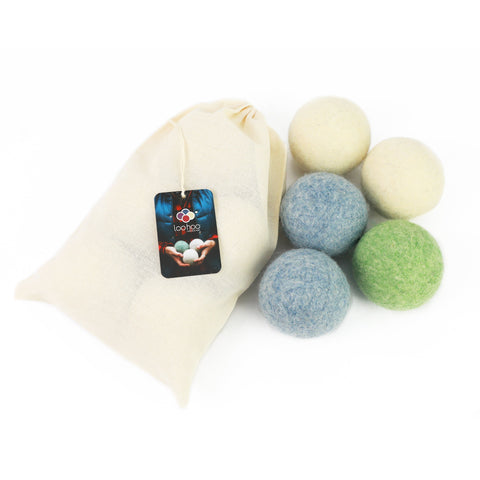Your Cart is Empty
Laundry Lore
October 17, 2024 3 min read

My teenage son, like many others new to the chore of laundry, thinks more is better when it comes to cleaning his clothes. After stretching, sweating and running for his high school cross country team five days a week, I can smell why he feels this way.
But this wicked thinking is the devil’s playground.
In fact, terrifyingly large portions of detergent leaves behind mounds of suds that affect the machine’s efficiency and performance. Buildup can clog hoses and valves and damage the washer, or at the very least, create a moist environment were mold and mildew thrives. Clothing is also subject to sticky residue or a thin layer of film that can trap dirt and fade fabric. Exercise gear and performance fabrics, such as synthetics, specifically can trap bacteria and lead to a smelly outcome.
Those with sensitive skin beware: Too much soap left over on fabrics may lead to allergies, itching and rashes. It’s best to follow the instructions and use the recommended amount.
Overloading a washing machine will also hinder the effectiveness of the appliance. Fill the drum no more than two-thirds to ensure properly cleaned laundry. A well-balance amount will also avoid damaging the machine and hefty repair bills.
Alternatives to wool dryer balls, namely tennis balls, is another ghoulish idea. Tennis balls are made with toxic chemicals that release harmful gas emissions and leave behind bits of rubber on clothes and in the machine after each cycle. And with heating rubber comes a stinky smell that’s bound to cling to laundry. They are also louder in the dryer and harsher on laundry and machines since they’re heavier than dryer balls.
Another eerie tale is that cobwebs of lint are harmless. As laundry dries, pieces of fabric come off due to friction, static and heat and accumulate in the machine’s vent. Since lint is a fire hazard, trays should be cleaned after every cycle. In fact, thousands of fires a year are reportedly linked to lint that falls into small holes and clogs the dryer. It’s best to remove the tray and then all of the lint. If lint remains, wash the tray in the sink with soap and warm water and gently rub the tray until water runs through the mesh. Follow up with a quick vacuuming of the slot where the tray is inserted into the dryer.
Lint buildup on laundry can also cause allergic reactions and irritate the skin. To mitigate this, experts suggest washing towels separately (lint loves towels), cleaning clothes inside out on the cold cycle and of course tossing in a few LooHoo wool dryer balls.
Vent covers and dryer hoses also howl for attention. Experts suggest removing and cleaning vents at least once a year with soap and water while hoses should be carefully cleaned with a vacuum. Remember there are typically two hoses; one inside and the other outside.
While dryers come with a timer, that time can lead to a grim outcome. Overdrying can shrink, discolor and damage fabric and lead to higher electricity bills. Don’t wait for the buzzard to sound; instead, keep an eye on the cycle and when the contents are dry, it’s time to remove. Laundry left in the dryer for long periods leads to wrinkles so remove and fold or hang items immediately after drying.
While it may be tempting to add scented laundry soap or use dryer sheets, opt for all-natural alternatives such as essential oils. Skip the hocus pocus and add a few drops on your LooHoos. Your laundry—and lair—will smell hauntingly fresh and clean.
Related Products
Subscribe
Sign up to get the latest on sales, new releases and more …

Join the LooHoo Community
Sign Up Now to be the first to learn about new products, sales and giveaways.




